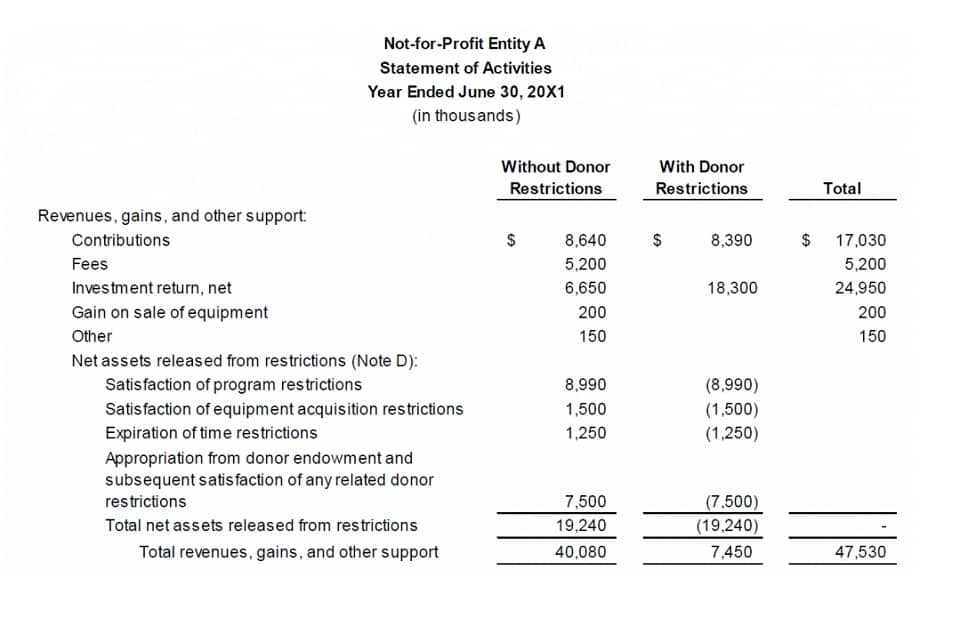
A business needs to record the true and fair values of its expenses, revenues, assets, and liabilities. Adjusting entries follows the accrual principle of accounting and makes necessary adjustments that are not recorded during the previous accounting year. The adjusting journal entry generally takes place on the last day of the accounting year and majorly adjusts revenues and expenses. The balances of the nominal accounts (income, expense, and withdrawal accounts) have been absorbed by the capital account – Mr. Gray, Capital. Hence, you will not see any nominal account in the post-closing trial balance.
- Closing all temporary accounts to the retained earnings account is faster than using the income summary account method because it saves a step.
- By debiting the revenue account and crediting the dividend and expense accounts, the balance of $3,450,000 is credited to retained earnings.
- They are your financial world’s safety net, ensuring that every act in your business’s ongoing economic play is above board.
- Closing Entries are journal entries that are recorded for the purpose of closing all temporary accounts and transferring their balances to permanent accounts.
- Whether it’s a routine audit or a surprise check from the authorities, with accurate closing entries, you’ll have nothing to fear.
- The contents of the Income Summary reflect the net performance of the business – essentially, they spotlight whether you’ve grown your debit revenue and turned a profit, or incurred a loss during the period.
Step 3: Close Income Summary account

To close expenses, we simply credit the expense accounts and debit Income Summary. To close that, we debit Service Revenue for the full amount and credit Income Summary for the same. The accrued interest payable account will increase the company’s liability because interest expense was incurred but remain unpaid, and an equal amount will increase the expenses of the income statement. After posting the above entries, all the nominal accounts would zero-out, hence the term “closing entries”.
- Adjusting entries ensures that revenues and expenses are appropriately recognized in the correct accounting period.
- At the end of the accounting period, the balances in these accounts are transferred to permanent accounts, resetting the temporary accounts to zero for the next period.
- These permanent files include assets, liabilities and equity sections making them very useful in showing the company’s financial position that lasts long.
- Without closing entries, tracking financial performance becomes challenging over time.
- To manage these financial processes effectively, participating in a reputable accounting course can provide invaluable knowledge and skills.
- By implementing automated closing processes, businesses ensure greater accuracy while freeing valuable resources for strategic financial activities.
- A closing entry is a journal entry that is made at the end of an accounting period to transfer balances from a temporary account to a permanent account.
Credit Risk Management

Doing manual closing entries might seem fine for small businesses, but as your client base or business grows, the chance for errors skyrockets. Your income statement will still show past earnings, which distorts how profitable the business actually is. This resets your revenue account to zero, allowing you Restaurant Cash Flow Management to start fresh for the next year. Closing these accounts ensures you don’t carry over old data, keeping everything clean for the new period. This removes the amount from dividends and reduces retained earnings, as it reflects profits paid out to shareholders.

Closing Entries: Definition, Purpose and Examples
- It’s not often mentioned outside of the closing process, but it plays a crucial intermediary role.
- In such a situation, the income summary account is closed by debiting the retained earnings account and crediting the income summary account.
- In this case, we can see the snapshot of the opening trial balance below.
- If the period incurred a loss, the Retained Earnings account must nobly absorb the impact, ensuring that the loss is reflected in the equity of the company.
- Within this cycle, closing entries come after preparing financial statements and before creating a post-closing trial balance.
Other accounting software, such as Oracle’s PeopleSoft™, post closing entries to a special accounting period that keeps them separate from all of the other entries. So, even though the process today is slightly (or completely) different than it was in the days of manual paper systems, the basic process is still important to understand. To complete the accounting cycle, closing entries must be journalized and posted. In adjustable Trial Balance, we processed the transactions for Bold City Consulting and prepared the financial statements at the end of March. A post-closing trial balance is, as the term suggests, prepared after closing entries are recorded and posted. It is the third (and last) trial balance prepared in the accounting cycle.
Common Month-End Closing Entries
To close the drawing account to the capital account, we credit the drawing account and debit the capital account. This is closed by doing the opposite – debit the capital account (decreasing the capital balance) and credit Income Summary. Temporary retained earnings accounts include all revenue and expense accounts, and also withdrawal accounts of owner/s in the case of sole proprietorships and partnerships (dividends for corporations). At month-end, you close out your expense accounts to the income summary. From the following trial balance of Mr. A. Lal, prepare trading, profit and loss account and balance sheet as on March 31, 2017. While understanding the manual process provides essential accounting knowledge, modern businesses benefit significantly from automating these procedures.
Dividend Accounts and Closing Journal Entries

In the next accounting period, these temporary accounts are opened again and normally start with a zero balance. In a general financial accounting system, temporary or closing entries examples nominal accounts include revenue, expense, dividend, and income summary accounts. Closing entries are journal entries made at the end of an accounting period. They serve to reset the temporary accounts, such as revenues and expenses, back to zero.


